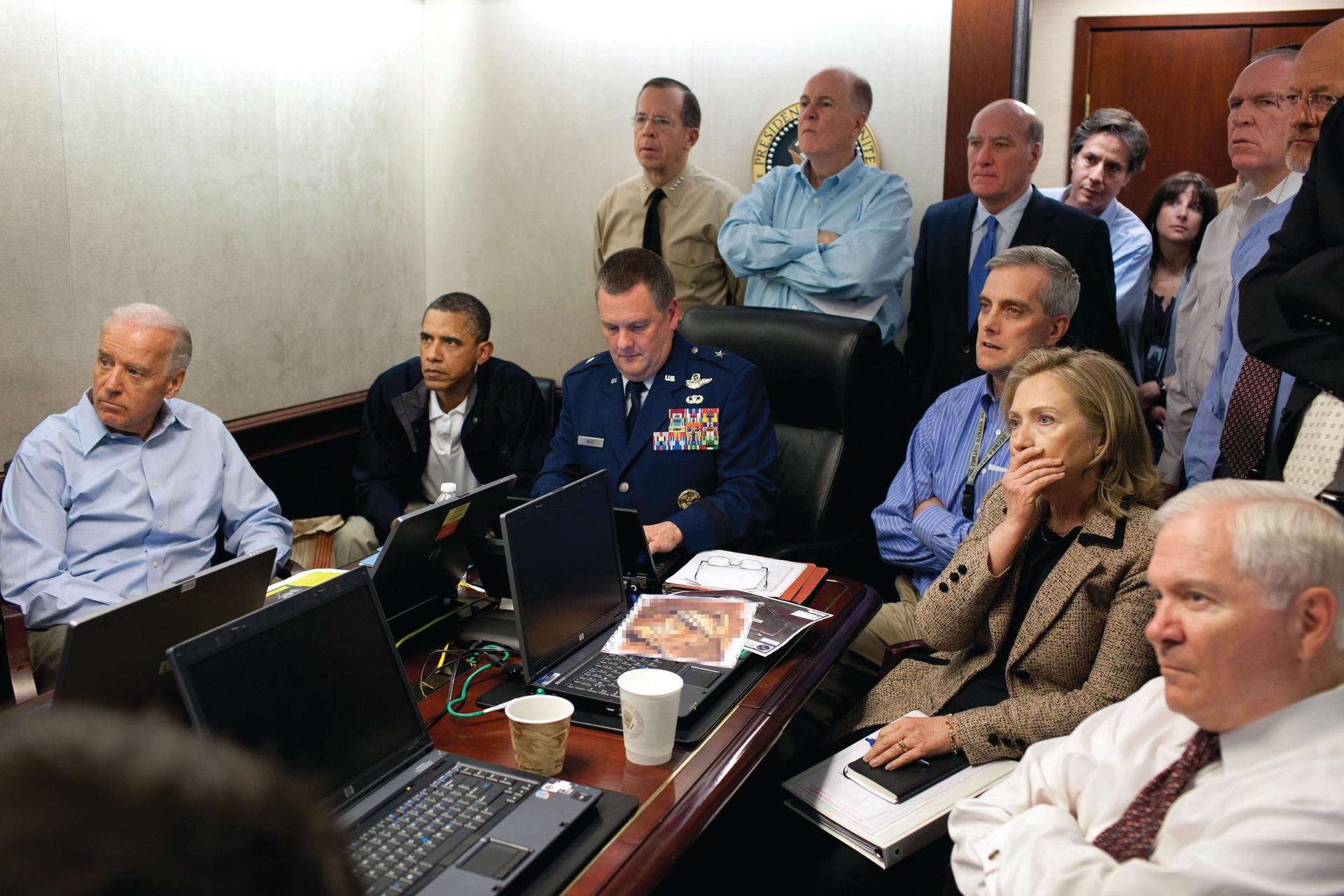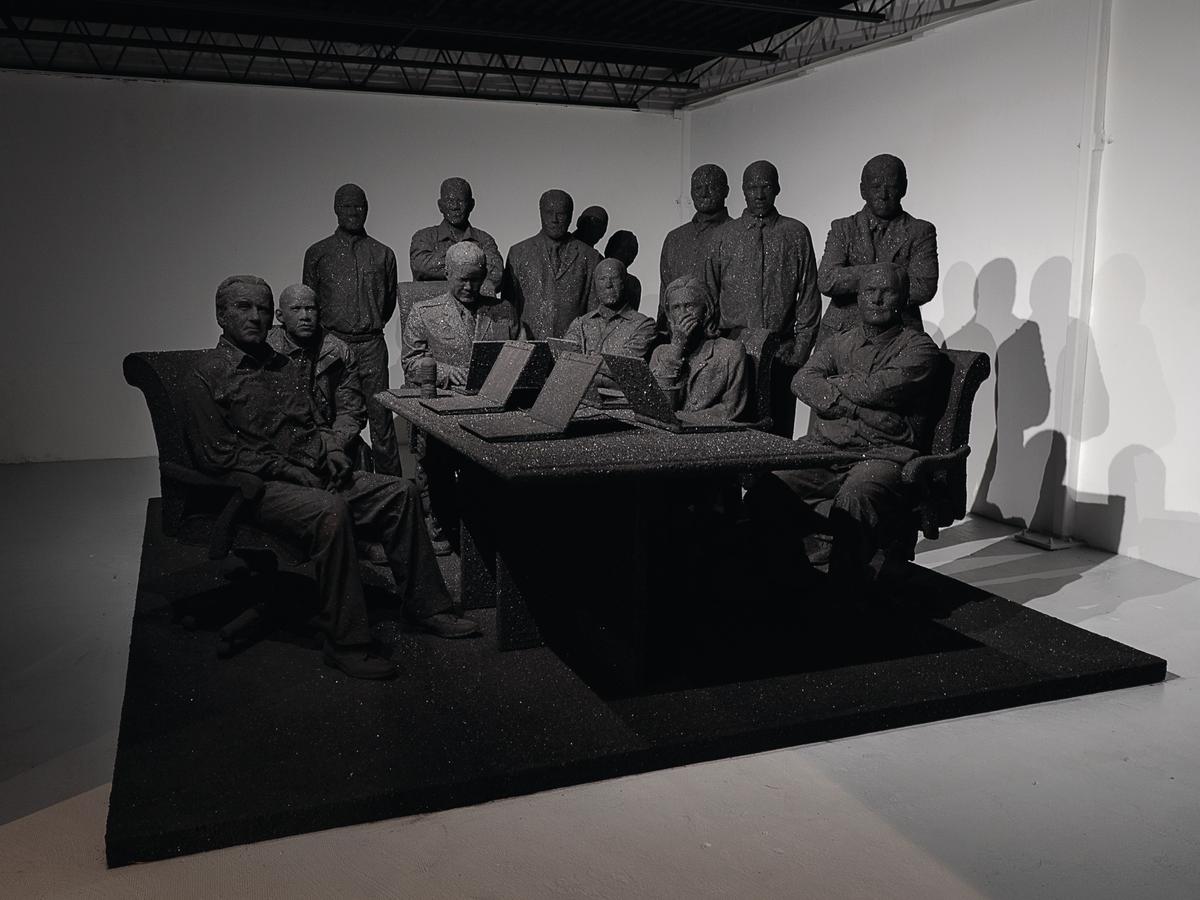Ten years ago, just days after the news broke that US Special Forces had tracked down and killed Al Queda leader Osama bin Laden on 1 May 2011, a photograph of then-President Barack Obama and his chief advisers receiving updates on the mission in the Situation Room was released by Pete Souza, the White House photographer. The image came to define a pivotal moment in recent US history, and subsequently was used in news reports around the world and remixed endlessly as an internet meme. “That photograph moved me and not in the obvious ways,” says the New York artist Will Ryman, who a few years later recreated that scene as a sombre coal-black sculptural installation—also called The Situation Room (2014)—which was recently acquired by the Margulies Collection in Miami, where it is now on view.
“I thought of [Rodin’s] Burghers of Calais, and all the conflicts throughout history over power and religion and energy and territory,” Ryman says. “That photograph reminded me of a Greek chorus narrating this conflict that's been going on for the last 60, 70 years, which seems to be repeating itself over and over again.” That repetition becomes even more pointed as the work recently went on public view for the first time again since its creation, just in time for the 20th anniversary of the 9/11 attacks and the US military’s invasion of Afghanistan. Many of the figures remain recognisable, including Joe Biden, then vice president, looking questioningly into the distance, and former secretary of state and presidential candidate Hillary Clinton, covering her mouth with her hand.

President Barack Obama and Vice President Joe Biden, along with with members of the national security team, receive an update on the mission against Osama bin Laden in the Situation Room of the White House, May 1, 2011. Photo: Official White House Photo by Pete Souza
The sculpture freezes “a very poignant moment in time for the military of the Americas in the 21st century, and then renders it in this very interesting way,” says Katherine Hinds, the curator of the Margulies Collection, where visitors have reacted positively to the dramatic installation. “It has this sort of archaeological feel to it, too.”
And despite the obvious political associations the work brings to mind, both Hinds and Ryman insist that the installation is not meant to be political itself. “Nor is it meant to be a monument,” Ryman says. “It was more about that instant—the postures, the expressions, the expressionless-ness. I knew that I wanted that photograph to be three-dimensional, to see what it felt like in that moment.”


